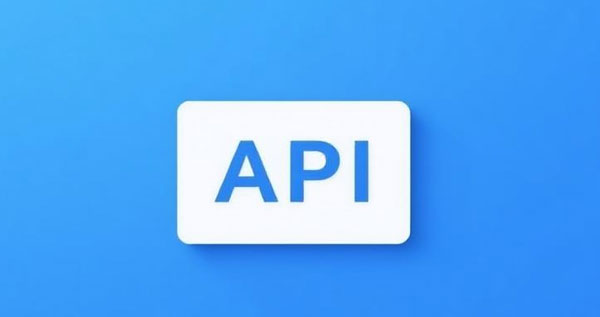WhatsApp API Messaging in Practice: A Complete Guide to Template Messages, Text Messages, and Sending Strategies
1. Introduction
In the wave of enterprise digital transformation, message delivery has become a vital touchpoint between users and brands. Compared to SMS and email, WhatsApp offers significantly higher open rates and interactivity, allowing businesses to engage users more precisely and efficiently. However, effectively utilizing the various message types within the WhatsApp Business API—while avoiding delivery failures, compliance risks, and inefficient outreach—is a critical challenge for both tech and operations teams. This article will comprehensively analyze best practices for WhatsApp message delivery, covering message types, template management, sending processes, and batch strategies. Where relevant, we’ll introduce LuckData’s Number Validation API to help optimize phone number quality before sending.
2. Overview of Message Types
2.1 Template Messages
Template messages are the only method for proactively sending messages to users without a conversation being initiated. These messages must be pre-approved by WhatsApp and can only be sent after users opt in to receive them. Common use cases include:
Order notifications: shipping, delivery, and return updates;
Appointment reminders: hospital, salon, or auto maintenance reminders;
Promotional campaigns: time-limited offers or holiday coupon pushes.
Templates can contain parameterized variables (e.g., name, order ID), multiple language versions, and buttons—making proactive outreach both compliant and interactive.
2.2 Session Messages
Once a user sends a message to a business, the business can reply freely for 24 hours, using text, media, and interactive elements.
Advantages: no approval needed, fully customizable;
Use cases: live customer service, issue resolution, or follow-up consultations.
If the user does not interact within 24 hours, businesses must revert to using a template message.
2.3 Media, Buttons, and Other Interactive Types
Beyond plain text, WhatsApp API supports rich media and interaction formats:
Images/documents/videos: ideal for invoices, product documents, or short tutorials;
Button messages: “Pay Now,” “View Details,” etc., to drive user action;
List messages: used for presenting multiple options for easy selection.
Combining these components intelligently boosts engagement and conversion.
3. Template Message Management & Creation
3.1 Template Structure
A full template message consists of four components:
Header: optional text, media, or file highlighting key info;
Body: main content, supports parameterized variables;
Footer: optional disclaimers or notes;
Buttons: can trigger URLs, phone calls, or simple replies.
Example structure (order update):
Header: “Your order has been shipped”Body: “Dear {{1}}, your order {{2}} was shipped on {{3}} and is expected to arrive by {{4}}.”
Footer: “Thank you for your support”
Button1: “Track Order” (URL)
Button2: “Contact Support” (Phone)
3.2 Template Approval Process
Go to the WhatsApp Business Manager > “Message Templates” > “Create New”;
Fill in header, body, buttons, and translations per documentation;
Submit and wait for approval, typically within 1–2 hours;
Once approved, use the template
namein your API calls.
Important considerations:
Variable order and placeholder formatting must be precise;
Avoid policy violations or aggressive promotional language;
Test in sandbox using JSON to preview content rendering.
3.3 Naming & Categorization Best Practices
Proper naming helps team collaboration and access control:
Naming convention:
${scenario}_${language}_${version}, e.g.,shipment_update_zh_v1,appointment_reminder_en_v2;Categorization: organize by business line (orders, appointments, marketing) or assign different Business Manager accounts to projects.
4. How to Send Template Messages
4.1 API Endpoint and Sample Call
Template messages use the following endpoint:
POST https://graph.facebook.com/v16.0/{{PhoneNumberID}}/messagesHeaders must include Authorization: Bearer {{Access_Token}}.
Python example:
import requestsurl = f'https://graph.facebook.com/v16.0/{PHONE_NUMBER_ID}/messages'
headers = {'Authorization': f'Bearer {ACCESS_TOKEN}'}
payload = {
'messaging_product': 'whatsapp',
'to': '8613712345678',
'type': 'template',
'template': {
'name': 'shipment_update_zh',
'language': {'code': 'zh_CN'},
'components': [
{
'type': 'body',
'parameters': [
{'type': 'text', 'text': 'John Doe'},
{'type': 'text', 'text': '1234567890'},
{'type': 'text', 'text': '2025-04-20'},
{'type': 'text', 'text': '2025-04-25'}
]
}
]
}
}
response = requests.post(url, headers=headers, json=payload)
print(response.json())
4.2 Replacing Template Variables
Parameter order: must match the placeholder sequence in the template;
Special characters: encode special characters or use UTF-8 as needed;
Multilingual: specify the language version using
language.code.
4.3 Troubleshooting Common Template Errors
Error Code | Description | Troubleshooting Tips |
|---|---|---|
131047 | Template not approved | Check approval status, revise |
131042 | Missing or incorrect parameters | Match template and fix order |
131046 | Variable text too long | Shorten text or split messages |
131027 | Exceeded rate limits | Throttle requests appropriately |
131004 | Phone number not on WhatsApp | Validate number before sending |
Always refer to error.message and error.code for debugging.
5. Phone Number Validation Before Sending (via LuckData)
Validating your number list before sending helps eliminate unregistered or deactivated numbers—saving quota, improving success rates, and protecting your business reputation. LuckData’s WhatsApp Number Validator API enables real-time batch checks without managing infrastructure.
Example Request (LuckData API)
import requestsheaders = {'X-Luckdata-Api-Key': 'your_free_key'}
payload = {'phone_number': '8613712345678'}
response = requests.post(
'https://luckdata.io/api/whatsapp-number-validator/rltsvuouydi1',
headers=headers,
json=payload
)
print(response.json())
Free Tier: 100 credits/month, 1 request/sec
Plans: Basic (5,000/month, 5 QPS), Pro (15,000/month, 10 QPS), Ultra (100,000/month, 15 QPS)
You can integrate number validation with your CRM export workflow to automatically label numbers as “valid,” “invalid,” or “not registered,” creating a clean whitelist before sending.
6. Bulk Messaging Strategy and Compliance Tips
6.1 Frequency Control & Timing
Rate limiting: follow WhatsApp’s rate guidelines (max QPS); implement token bucket or leaky bucket logic;
Sending windows: align with user timezone, ideally 9 AM–8 PM local time on weekdays.
6.2 Segmentation & Personalization
User segmentation: based on location, activity, or purchase behavior;
Dynamic templates: use user attributes (e.g., birthday, recently viewed items) to personalize message content.
6.3 Compliance & Consent Mechanisms
Opt-in notice: notify users during sign-up or login that they may receive WhatsApp messages and collect explicit consent;
Opt-out options: provide unsubscribe buttons or keywords (e.g., reply “STOP”), and update preferences in real time;
Privacy compliance: ensure data collection and usage complies with GDPR, CCPA, etc.
7. Conclusion
By understanding the different types of WhatsApp messages—template, session, and rich media—and how to use them, you can greatly improve both delivery and user experience. Proper template management, accurate parameter replacement, and error troubleshooting are crucial to successful messaging. Additionally, using LuckData’s Number Validation API allows you to filter out bad numbers ahead of time, reducing failure rates and protecting your messaging quota. Finally, a well-designed bulk messaging and compliance strategy ensures your WhatsApp communications remain effective, secure, and personalized.




